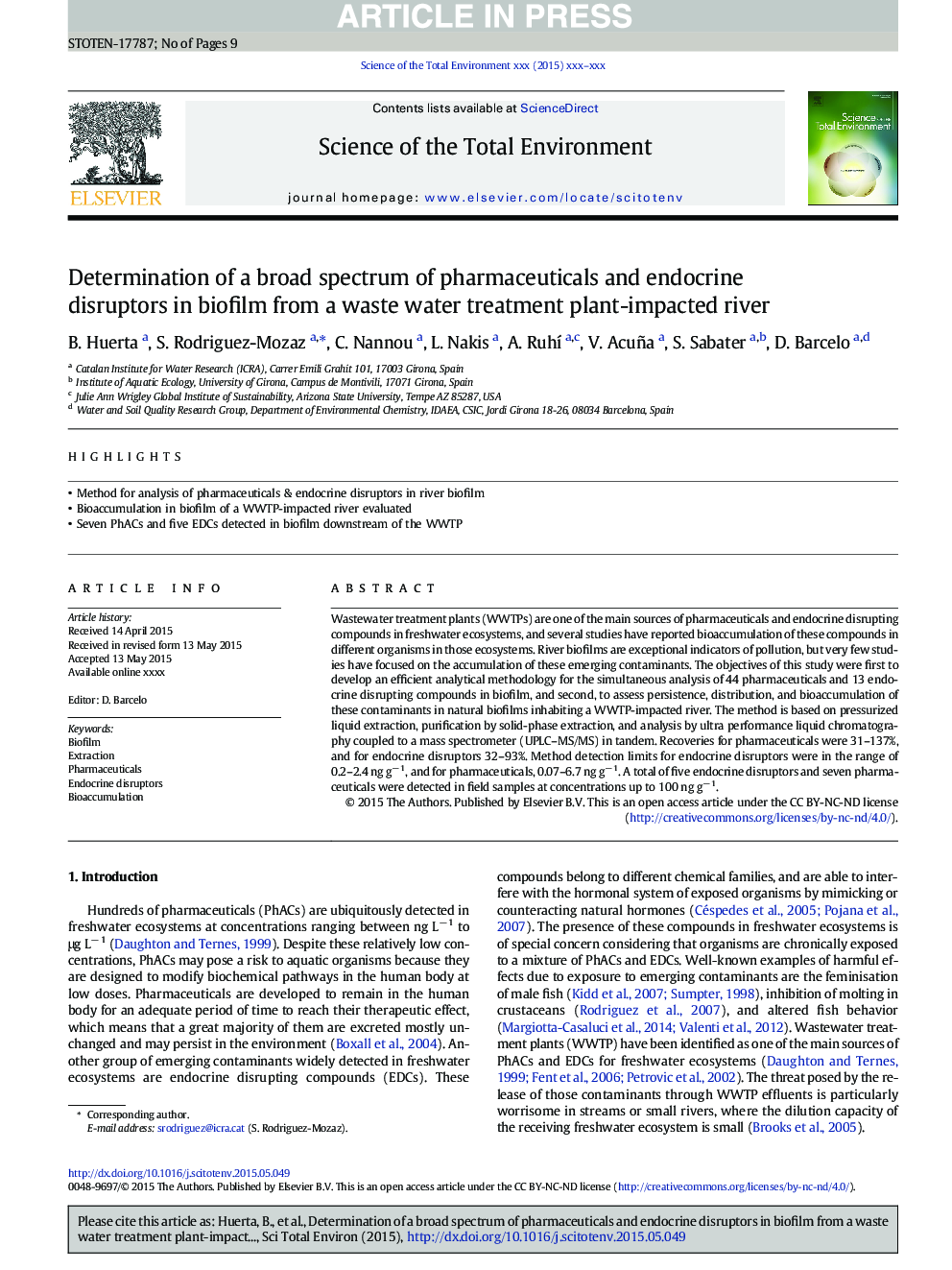| Article ID | Journal | Published Year | Pages | File Type |
|---|---|---|---|---|
| 6324632 | Science of The Total Environment | 2016 | 9 Pages |
Abstract
Wastewater treatment plants (WWTPs) are one of the main sources of pharmaceuticals and endocrine disrupting compounds in freshwater ecosystems, and several studies have reported bioaccumulation of these compounds in different organisms in those ecosystems. River biofilms are exceptional indicators of pollution, but very few studies have focused on the accumulation of these emerging contaminants. The objectives of this study were first to develop an efficient analytical methodology for the simultaneous analysis of 44 pharmaceuticals and 13 endocrine disrupting compounds in biofilm, and second, to assess persistence, distribution, and bioaccumulation of these contaminants in natural biofilms inhabiting a WWTP-impacted river. The method is based on pressurized liquid extraction, purification by solid-phase extraction, and analysis by ultra performance liquid chromatography coupled to a mass spectrometer (UPLC-MS/MS) in tandem. Recoveries for pharmaceuticals were 31-137%, and for endocrine disruptors 32-93%. Method detection limits for endocrine disruptors were in the range of 0.2-2.4 ng gâ 1, and for pharmaceuticals, 0.07-6.7 ng gâ 1. A total of five endocrine disruptors and seven pharmaceuticals were detected in field samples at concentrations up to 100 ng gâ 1.
Related Topics
Life Sciences
Environmental Science
Environmental Chemistry
Authors
B. Huerta, S. Rodriguez-Mozaz, C. Nannou, L. Nakis, A. RuhÃ, V. Acuña, S. Sabater, D. Barcelo,
